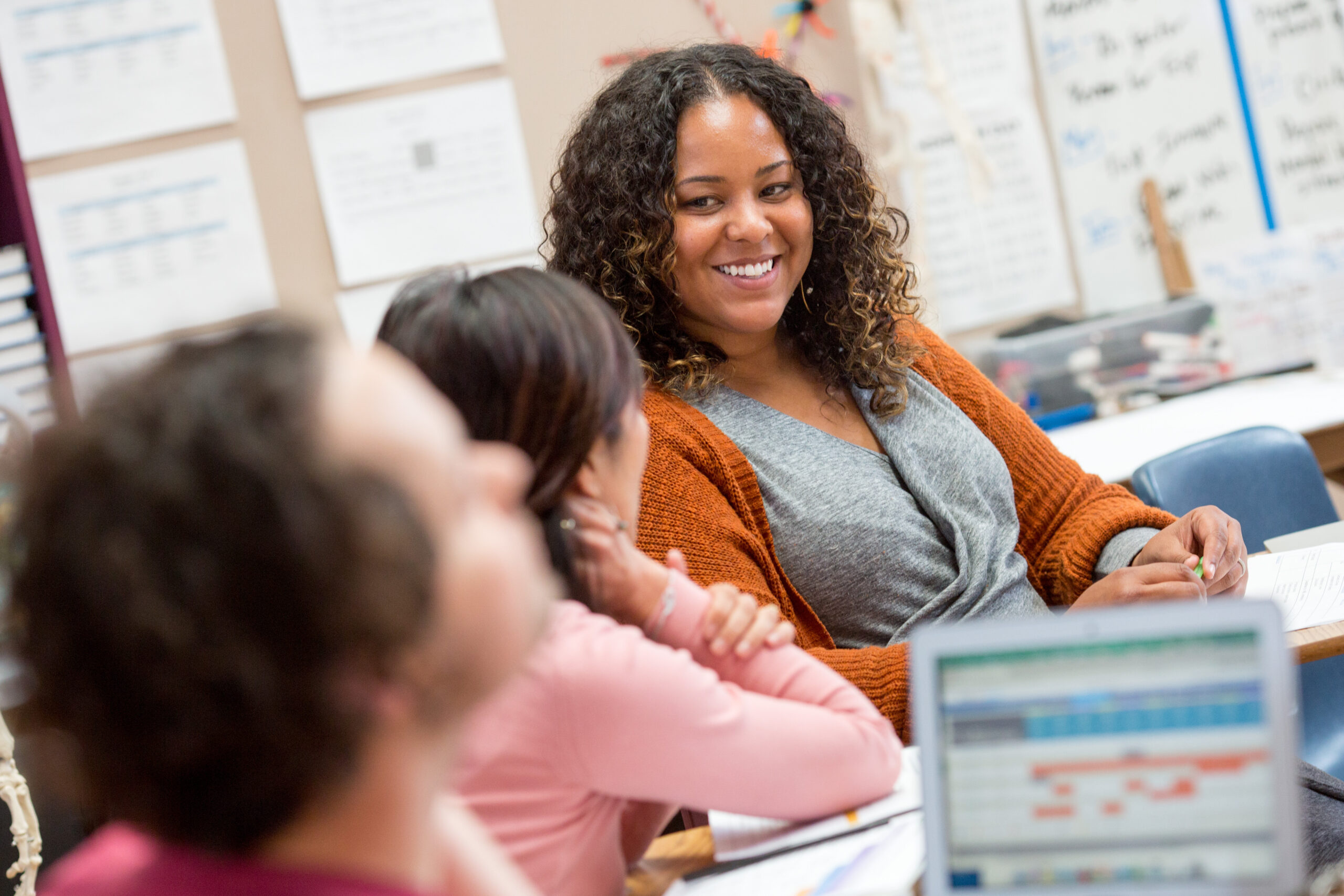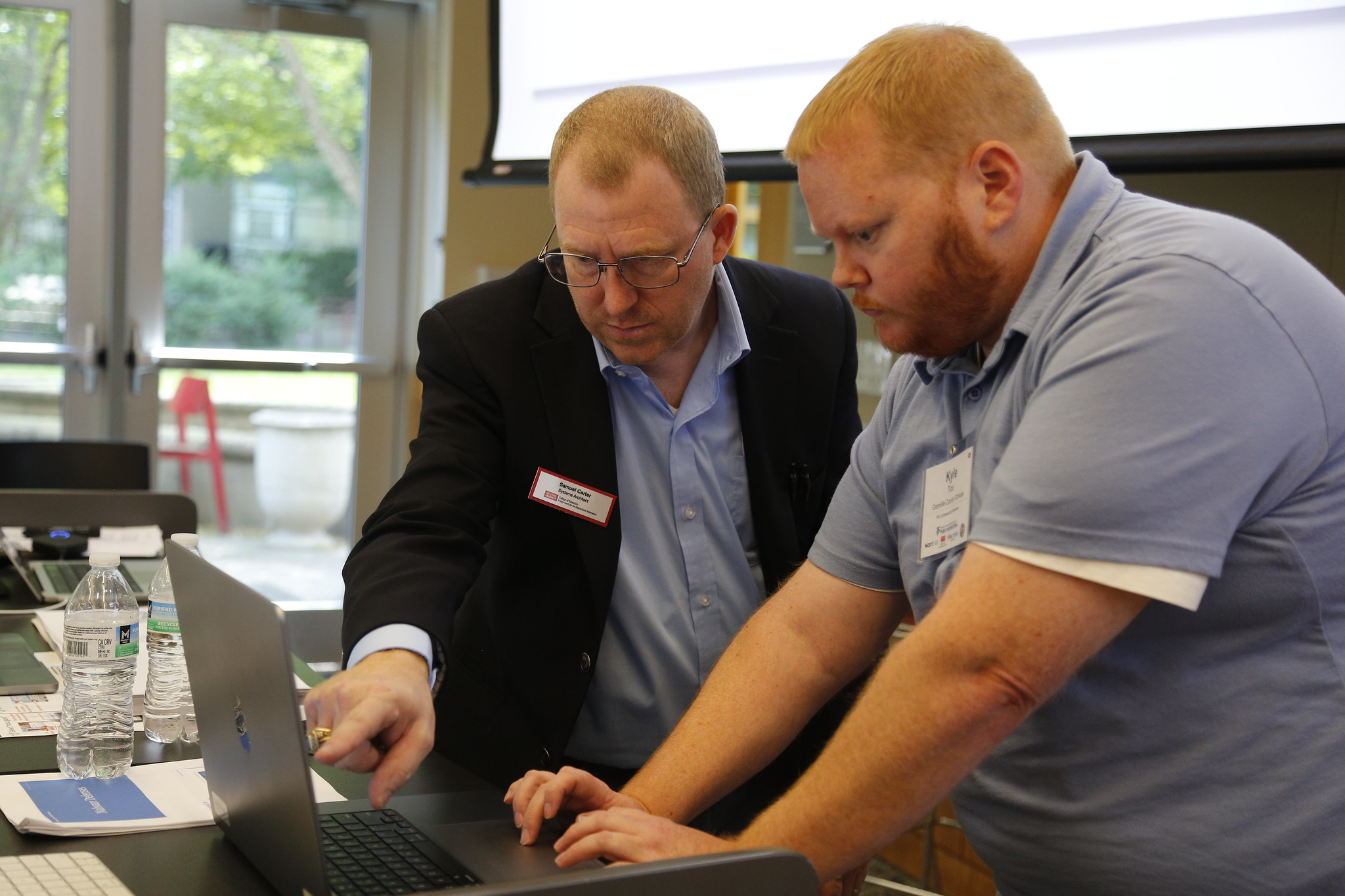Exchange, Experience and Exploration by Yuanyuan Fang
The past two months at NCSU have been busy but rewarding. We have been gradually acclimating ourselves to our new life in the United States. Every week, we harvest the benefits of exchanging ideas with new friends, exploring diversified cultures, and experiencing challenging but exciting learning programs.

On October 7, 2014, The Friday Institute welcomed over 30 principals from Jiangsu Province, China, to exchange ideas with Dr. Hiller Spires and the Beijing Royal School teachers participating in the New Literacies and Global Learning program. The subjects of the session covered blended learning methods, international students’ assessment and excellence, teaching and learning in diversified cultural contexts, and global competency.
In the session, Dr. Spires delivered a brilliant and thought-provoking presentation–Blended Learning: A Contemporary Approach to Teaching and Learning. Dr. Spires presented her research: Having Our Say: U.S. and Chinese Teachers’ Perceptions, through which we have learned the significance of the most important 21st century skills–critical thinking and problem-solving skills and communication and collaboration skills. To help us have a better understanding of problem-solving and collaboration skills, Dr. Spires encouraged us to complete an interesting task: The Marshmallow Design Challenge.


The Marshmallow Challenge is a fun and instructive design exercise that motivates teams to experience simple but profound lessons in areas of: design thinking, visual collaboration, effective innovation and team creativity. Dr. Spires gave us clear instructions: in eighteen minutes, teams must build the tallest free-standing structure out of 20 sticks of spaghetti, one yard of tape, one yard of string, and one marshmallow. The marshmallow needs to be on top.


It was the first time for most of the teachers and principals to try out the challenge, and we were excited about that. Who would be the winner? Who would be the best team? Surprises tend to emerge when teams compete! The principals from Jiangsu province and the BRS teachers were divided into five groups, and each group cooperated together to brainstorm, design, discuss, analyze, synthesize and build their own tallest free-standing Marshmallow tower. Our BRS teachers worked with the principals in building problem-solving and collaboration skills. During this process, we experienced thinking, inquiring, communicating and creating processes just like our students. This meta-cognitive process is rather enlightening.
The Future of Education
We were all impressed with the video Dr. Spires showed–Bridging the Future. It offered a glimpse into the future of the K-12 education model. We have learned how students use technology to collaborate with peers and industry experts to build a bridge model, from the initial design phase to the final structure testing. It was motivating for teachers to provide innovative, personalized and secure learning environments to prepare our curious students for a career in the 21st century. According to Dr. Spires, blended learning is a contemporary approach to new literacy in the 21st century. Both project-based inquiry and TPACK (Technology, Pedagogy and Content Knowledge) are an indispensable trend for our digital natives (learners who were born in the digital age). One of the principals commented after the video, “It is the future of global citizens. It is time for educators to transform!”
[youtube=https://www.youtube.com/watch?v=BYMd-7Ng9Y8]
As global students and teachers who have experienced two very different learning and teaching processes, my colleagues and I had a wealth of ideas to exchange with the principals in the panel discussion. They raised some good questions, such as: What is the most exciting thing about the United States? What is the difference between Chinese and Western learning processes? How can the visiting BRS students improve teaching and learning in China after graduating from NCSU? What is the biggest challenge we have encountered here? My colleagues and I made comparisons and contrasts by incorporating our teaching and learning experiences in China with what we have learned in the United States. The consensus was that a proper integration of the two different learning and teaching processes is based on a command of knowledge of the two different cultures.
At the end of the session, Dr. Spires asked the principals to take with them the ideas they had heard. The principals found the discussion to be content- rich, rewarding and thought-provoking!
As Dr. Spires said in her presentation, the world is changing and it is time for teachers and educators to be well prepared, and to transform.
Exploration During Fall Break


After two-months of hard work, we conducted our historical and cultural journey during the four-day Fall Break. Weiyan had great fun experiencing American culture at Hill Ridge Farms. Chang, Yuanyuan, Mi, and Hong explored Raleigh and watched a fantastic NCSU football game. Zhongcheng, Yan, Xiaolei, Wenting and Shuang went to explore Washington DC. They visited marvelous museums and grand monuments. We all agree, learning is not restricted to class. We learn everywhere.

Yuanyuan Fang


